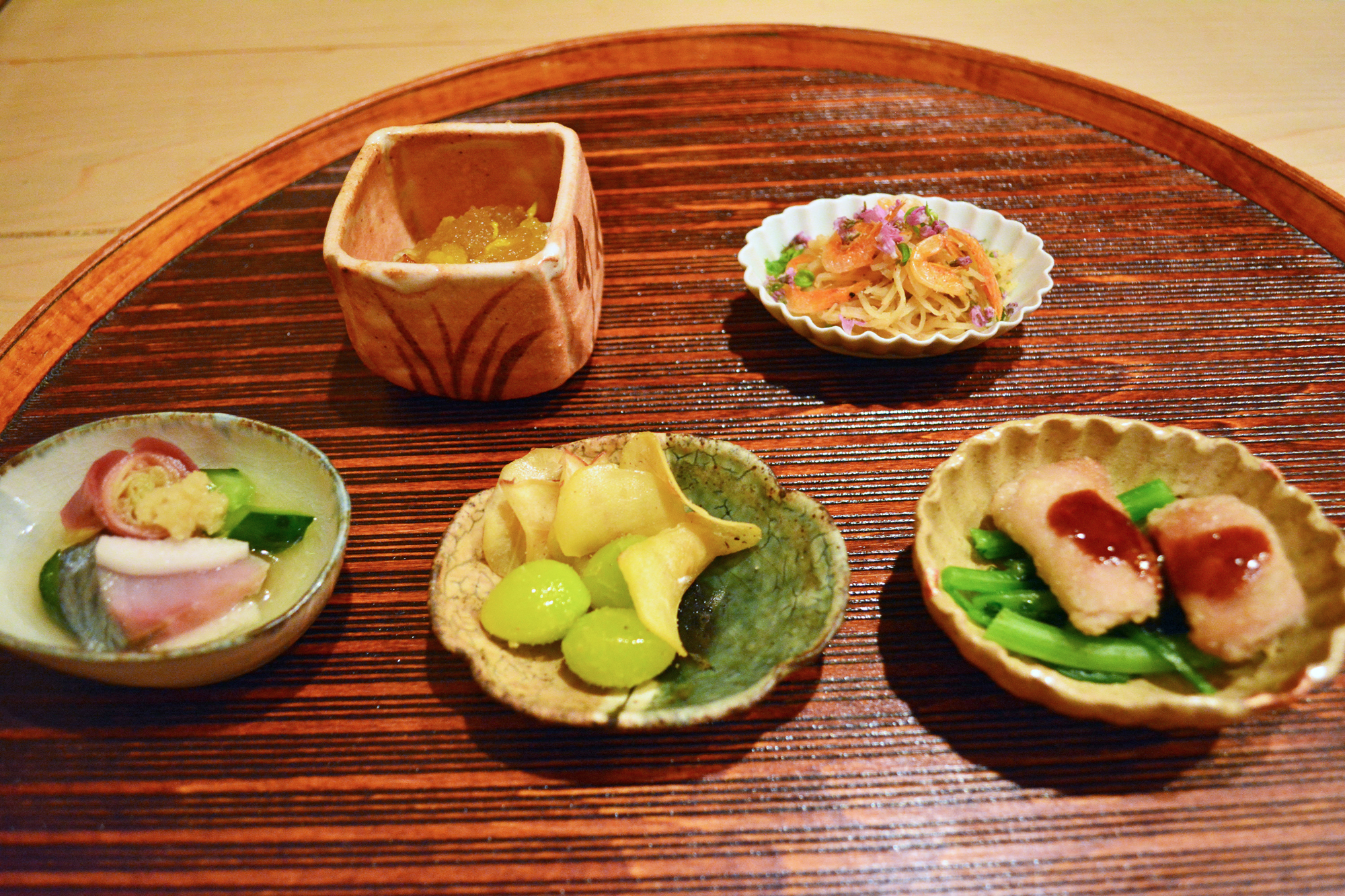Across from Osaka's Van Gogh museum is Kaishoku Shimizu, a Japanese multicourse restaurant with a facade that looks small enough to squeeze onto a canvas. Between the counter and the two tables it can accommodate 15 diners, which may be a decent amount for restaurants of this kind but good luck trying to squeeze Japan's rugby heroes into this intimate space. The chefs — there are no waiters — are constantly having to shift one way or another as they attend to various tasks. Presiding over the cooks is the eponymous Toshihiro Shimizu, an affable and masterful head chef.
Shimizu cooks kaiseki ryōri, Japan's native fine dining. His food is served in and on a beautiful array of dishes and he provides his guests with information about the ingredients. This is the standard kaiseki dining experience, but where Shimizu excels is by adding a dash of creativity to his cooking, an unteachable trait, perhaps — and one that Van Gogh, in his museum across the road, would approve of.
For the hassun (second course), which typically sets the seasonal tone, a handful of luminous green gingko nuts and chestnut chips were served on a small, ornate dish. The chips tasted similar to senbei (rice cracker), but were perfectly paired with the gingko. Later during this course, a sliver of shimesaba (marinated mackerel) was served with its robust taste toned down. But what it lost in intensity was balanced by an understated lusciousness. And Sakura ebi, a dainty species of shrimp from Suruga Bay, Shizuoka Prefecture, were then folded into lumps of potato — the shrimp turned up again in the penultimate rice dish, delicately flavored with myōga (Japanese ginger).

















With your current subscription plan you can comment on stories. However, before writing your first comment, please create a display name in the Profile section of your subscriber account page.